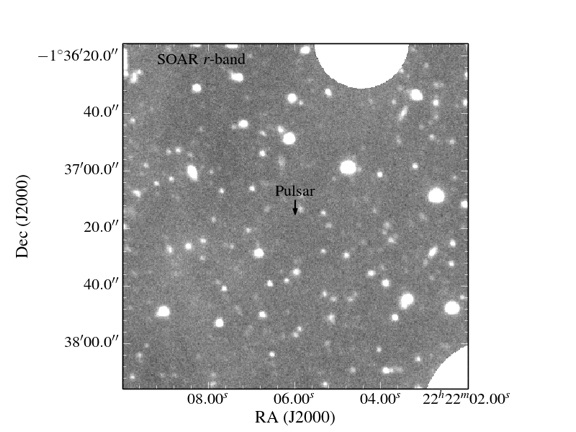June 24, 2014
By Laura L. Hunt
A team of astronomers has identified possibly the coldest, faintest white dwarf star ever detected. This ancient stellar remnant is so cool that its carbon has crystallized, forming – in effect – an Earth-sized diamond in space.
“It’s a really remarkable object,” says David Kaplan, assistant professor of physics at the University of Wisconsin-Milwaukee (UWM). “We expect a large number of old white dwarfs to be around. They are just hard to see, and if we don’t know where to look, they are basically impossible to pick out.”
White dwarfs are the extremely dense end-states of stars like our sun that have collapsed to form an object about the size of the Earth. Composed mostly of carbon and oxygen, they cool and fade over billions of years.
The chief barrier to learning more about the coldest white dwarfs is the difficulty in finding them. What makes this study so exciting, Kaplan says, is that data about another stellar object has given clues to the white dwarf’s existence.
Kaplan and his colleagues found this 11 billion-year-old gem using the National Radio Astronomy Observatory’s (NRAO) Green Bank Telescope (GBT).
But the telescopes didn’t actually allow scientists to see the white dwarf. Instead, they were studying a millisecond pulsar, found two years ago by Jason Boyles, now a visiting assistant professor at Western Kentucky University, using the GBT.
Pulsars are spinning neutron stars. Boyle’s discovery is a collapsed, dying star many times more massive than our sun, but only about 20 miles across. Identified as PSR J2222-0137, which simply identifies its position in the sky, this pulsar is spinning more than 30 times a second. As it spins, a beam from its magnetic pole sweeps repeatedly past Earth, giving rise to regular blips of radio waves.
The pulsar was then observed during a two-year period by Adam Deller, an astronomer at the Netherlands Institute for Radio Astronomy. These observations pinpointed its location and distance from Earth – about 900 light-years away in the direction of the constellation Aquarius.
The observations of the pulsar also revealed that it is gravitationally bound to a companion star: The two orbit around each other every 2.45 days. It is this companion object that appears to be either another neutron star or, more likely, a remarkably cool white dwarf.
Deller’s observations pinpointed the position of the pulsar so precisely, says Kaplan, “You could say that we know the position of the pulsar to better than one pixel.” And this became very important when they searched for optical evidence of the white dwarf companion.
The team applied Einstein’s theory of general relativity, which first predicted that light (or radio waves) slows in the gravitational field of a massive object. From the periodic delay of the radio signal as the radio beam from the pulsar skimmed over the surface of the companion, the team could determine the orientation of the orbit of the two stars in space, as well as their individual masses.
They found the pulsar has a mass 1.2 times that of the sun and the companion a mass about the same as the sun.
Next, they searched for visible and infrared evidence of the companion, using the Southern Astrophysical Research (SOAR) telescope in Chile, and the Keck telescope in Hawaii. With their knowledge of the distance of the pulsar, the team was able to calculate how intrinsically faint the companion object is.
Even though the “cool companion” is not visible, Kaplan says, they strongly believe it is white dwarf because of its circular orbit. “If it were a neutron star then we would expect an elliptical orbit,” he says.
The next step, he says, is to actually detect the white dwarf in order to model conditions that will make it easier to find and study white dwarfs and other such cold objects in space.
The paper was recently published online in the Astrophysical Journal.













